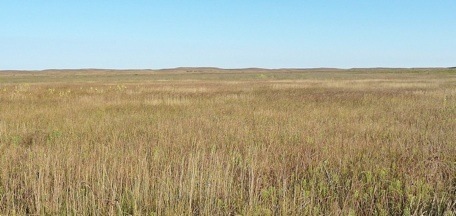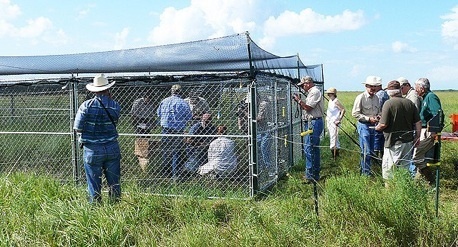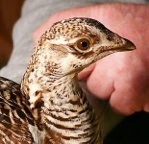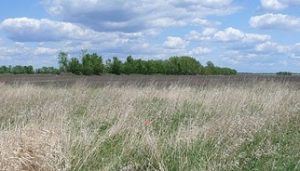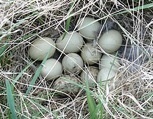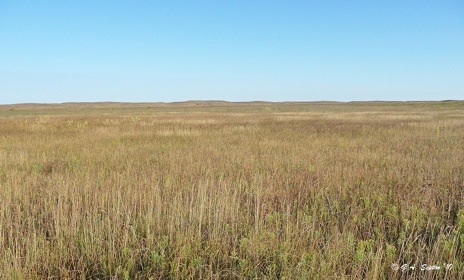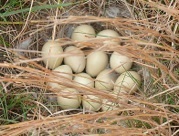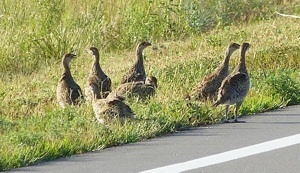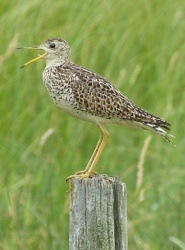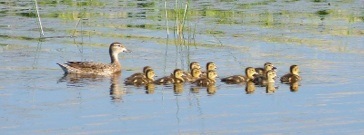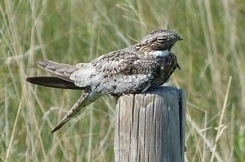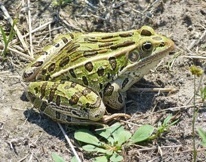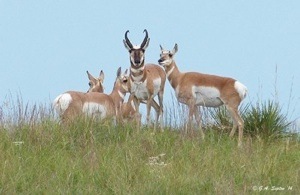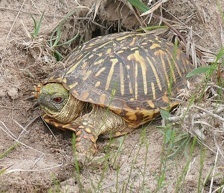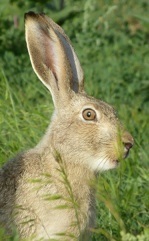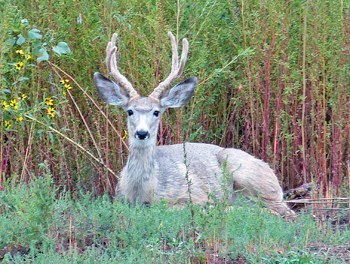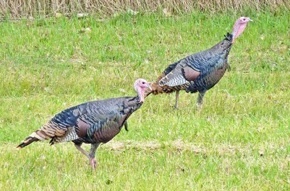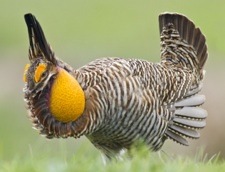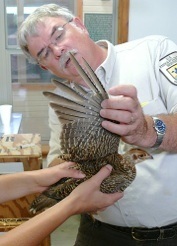Society of Tympanuchus cupido pinnatus
STCP Research and Conservation Projects
Prairie chickens & grasslands – 2000 and beyond (report PDF)
Note: This page provides archived content from the original STCP website as shown in 2016.
Nebraska
Year-Round Ecology of the Greater Prairie-Chicken in Native Habitat: The Sandhills of Nebraska, 2012-2015
All too often, wildlife research is only initiated when problems arise in an effort to identify causes and prescribe fixes. STCP has addressed issues like this for many years and realize now that the most important research focus for the future of prairie grouse is to determine what actually works in the best remaining native habitat. Assembling a detailed picture of all the elements in play for a sustainable or increasing population of prairie grouse will provide more long-term, valuable information than determining all the fixes for populations in decline throughout the range.
In a unanimous vote at its annual meeting in December 2011, STCP committed to answering this question and in March 2012 we began a 3+ year research project in the Sandhills of Nebraska — perhaps the last, best place to study a large, viable prairie-chicken population in vast expanses of native grassland habitat.
Our new focus in the Sandhills of Nebraska will be the first important study aimed at answering the question, “What is normal?” The outcome could provide answers that will help ensure a secure future for prairie-chickens and other prairie grouse.
More information about Nebraska work (below)
Texas
Attwater’s Prairie-Chicken
STCP is involved in a multi-year project working to evaluate the release of pen-reared Attwater’s Prairie-Chickens (APC) (the most endangered grouse in North America) on a private ranch in Goliad County, Texas. Our evaluations will include monitoring movements, dispersal and survival of the released birds and entail daily monitoring and radio-tracking throughout the year.
Since 1995, a total of 2,413 pen-reared APCs have been released from captivity back into the wild. In 2007, STCP became directly involved with the recovery of this species when 55 pen-reared, APC were released at the Goliad project site. This was followed by additional releases of 133 birds in 2008, 95 in 2009, 48 in 2010, 72 in 2011, and 9 in 2012. Releases of captive-reared birds also took place at the Attwater’s Prairie-Chicken National wildlife Refuge (APCNWR) where between 1995-2013, a total of 1,685 were released. At the Texas City Prairie Preserve, a total of 320 birds were released between 1996-2010. In 2013, all 228 captive-reared birds were released at the APCNWR. And in 2014 a record total of 351 captive-reared birds were released at the refuge. An article by Dr. Mike Morrow pertaining to the record 2014 releases as well as current survival statistics is downloadable at: APC2014.
As part of this project, young of the year Greater Prairie-Chickens are also being radio-tracked by STCP in northwestern Minnesota as a control group to compare condition and survival of a stable or increasing population with the pen-reared APC in Texas. Additional STCP research underway with APC and Greater Prairie-Chickens (for comparison) include studies pertaining to insect numbers and diversity, disease, genetic evaluations, diet and nutrition, growth and blood and egg chemistry. In 2010 with the support of a grant from the National Fish and Wildlife Foundation (NFWF), STCP initiated an effort to look into the role that red imported fire ants (RIFA) may be having on chick mortality and native insect availability and its relationship to brood survival. In late 2009 STCP was awarded funding for this project and in the fall of 2010 aerial spraying for fire ant control was initiated on six pastures totaling nearly 3,000 acres at four study areas. Evaluations of these efforts and insect monitoring began in the spring of 2011.
Click this link for a PDF copy of the Final Report for this NFWF funded project: FINAL REPORT.
This project is a partnership with the following organizations:
- Society of Tympanuchus Cupido Pinnatus, Ltd. (STCP)
- Grazing Lands Conservation Initiative (GLCI)
- Coastal Prairie Coalition of the GLCI
- The Nature Conservancy (TNC)
- U.S. Fish and Wildlife Service (USFWS)
- Texas Parks and Wildlife Department (TPWD)
- APC captive-rearing facilities
- Natural Resources Conservation Service (NRCS)
- Papalote Land and Cattle Company
- National Fish and Wildlife Foundation (NFWF)

Jay Kelso of the TX chapter of TNC watches as two Attwater’s Prairie-Chicken chicks flush on the Goliad Prairie. Photo by Kirk Feuerbacher
More information on Attwater’s Prairie Chicken work (below)
Wisconsin
Prairie-Chickens and Grasslands: 2000 and Beyond
Between 1996-2004, 382 nests and 67 broods were studied in the central Wisconsin grasslands in a broad scale, comprehensive research project titled: Prairie-Chickens & Grasslands: 2000 and Beyond. Of note were studies regarding dispersal and documented nesting success between intensively managed and unmanaged habitat.
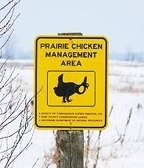
The majority of Wisconsin’s remnant population of prairie-chickens are found on the state-managed Buena Vista Marsh.
Comparisons with concurrent studies and genetic analysis in Minnesota also documented a reduction in the genetics of Wisconsin’s remnant population of prairie-chickens. As a direct result of this research, in 2006 STCP was contracted by and worked in cooperation with the Wisconsin DNR to conduct the first translocation of prairie-chickens from Minnesota to Wisconsin in an attempt to restore the genetics of Wisconsin’s remaining prairie-chickens. Additional cooperators with this translocation included the Minnesota Prairie Chicken Society, Minnesota DNR, Wisconsin DNR and private landowners in Minnesota and Wisconsin.
This genetic infusion will likely only serve to buy time. The real issues STCP research identified regarding habitat loss and connectivity between sub-populations still need to be seriously addressed by State wildlife officials if prairie-chickens are to be self-sustaining and have a long-term secure future in the state.
With continuing range constriction and isolation in Wisconsin, the most important prairie-chickens for the state today are the large populations in Nebraska, South Dakota and Kansas. In the future, these larger populations will be the sources to translocate birds from to maintain genetics in remnant populations in Wisconsin, Illinois, Missouri, North Dakota, and Iowa.
For more information on Wisconsin’s prairie-chickens, click below:
WIPrairieChickens.pdf
Minnesota
Nesting and Brood Survival
This STCP project compares Greater Prairie-Chicken nest success, brood and seasonal survival in CRP and “native” grasslands in northwestern Minnesota. Between 1992-2007, 964 nests and 192 broods were documented and studied. Plans are to complete field research in 2011.
Greater Prairie-Chicken Translocation
Since 1999, a total of 566 prairie-chickens have been translocated from northwestern Minnesota to the Lac qui Parle Wildlife Management Area (LQP) in west central Minnesota. This effort seeks to reestablish a population at LQP and expand the species’ range southward to connect with prairie-chicken populations in South Dakota. The last birds were released in 2006. Between 1999-2005, 95 nests were documented.
The future status and fate of this reestablished population will be monitored through annual booming ground counts. This has been a cooperative effort between STCP, Minnesota Prairie Chicken Society, National Fish and Wildlife Foundation and Minnesota DNR.
Pheasant Nest Parasitism
STCP is concerned that presence of high densities of pheasants in much of the grassland habitat in the Midwest may limit the distribution and numbers of prairie-chickens. If prairie-chickens and pheasants are going to coexist we need to know more about habitat use and nest parasitism. This study attempts to gain a better understanding of the effects of pheasant nest parasitism on a reestablished prairie-chicken population and is a cooperative effort between STCP, Minnesota DNR and the Minnesota Prairie Chicken Society.
Electric Wind Generators
Wind energy development on the prairie has raised concerns among biologists about the towers’ effects on grassland birds, especially prairie grouse; the latter being one of the few birds that remains on the prairie year-round. At this time, there are efforts to use the presence of prairie grouse to influence the placement of these towers in grassland areas away from display grounds. Some biologists have speculated that the towers will further fragment grassland habitat creating barriers to dispersal and may cause prairie-chickens to avoid or abandon the area within and surrounding the towers. At this time there is no evidence to support either of these contentions. However, placement of smaller (3-36) wind generator complexes spread out across a broad landscape may be an ecologically sound way to approach this issue. Our reasoning is based on initial studies of prairie-chickens around a small wind generator complex near Felton, MN where populations have remained stable or increased. This complex was placed in an agricultural field and is completely surrounded by permanent grassland habitat. In 2006, booming and dancing ground surveys were initiated within 2 miles of a 36-tower complex in the Sandhills near Ainsworth, Nebraska for a larger scale comparison.
In the quest for green energy, thought must be given not only to the placement of wind generators but also the effects of the resulting transmission lines and the service roads that would likely increase human activity in the area. A common sense approach to placement of wind generators/complexes would be to place them in agricultural and urban landscapes where transmission lines and roads already exist and avoid placing them in native landscapes and prime or critical wildlife habitats.
In 2012, STCP began a 2-3 year research project in Nebraska’s Sandhills. The outcomes of this project may have implications in regard to prairie-chicken dispersal, movements and nesting in this region that would provide much needed baseline data that could be helpful in determining wind generator placement.
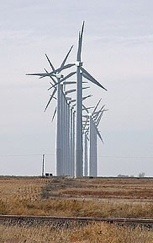
Placing wind generators in altered landscapes such as agricultural and urban settings rather than grasslands could be a common sense approach to preserving critical wildlife habitat.
North Dakota
Bry Prairie-Chicken Management Area
The Bry Prairie-Chicken Management Area in Grand Forks County has been surveyed for prairie grouse for the North Dakota Game and Fish Department (NDGF) for 17 years starting 1990 and then from 1992-2008. This population was reestablished via translocation of birds from northwestern Minnesota, South Dakota and Nebraska between 1992-1997.
Sheyenne Prairie-Chicken management Area
This area has been surveyed by STCP for NDGF since 2005 to monitor prairie-chicken numbers on private grasslands surrounding the Sheyenne National Grasslands. Information is used to evaluate numbers and distribution as an overview of the NDGF limited permit prairie-chicken hunting season started in 2005; the first prairie-chicken season in over 60 years. Between 1993-1999, 81 nests were documented in North Dakota.
Illinois
Translocation and Genetic Monitoring
In 2003, STCP assisted with trapping prairie-chickens on booming grounds in Illinois to collect genetic samples to document contemporary genetic diversity. This was a follow-up to the translocation of birds from northwestern Minnesota, Nebraska and Kansas. This rescue increased the genetic diversity of this population that had been reduced to fewer than 50 birds. This is an ongoing project and the population will be monitored periodically at least every 10 years to ascertain its genetic diversity to document changes.
According to personnel with the Illinois Department of Conservation this population has responded and increased from less than 50 birds to over 200.
Collective Database
STCP has an extensive prairie-chicken booming ground location, nesting and genetic database that can be used for comparisons regarding the status of populations and the genetics of translocation efforts. This collective database consists of 10-50 years of booming ground counts and over 1,500 nests that includes information for each nest on species composition, last disturbance, VOR, egg size and color. STCP also has the Hamerstrom database as well as genetic samples and measurements from several thousand birds from Minnesota, North Dakota, South Dakota, Wisconsin and Illinois.
The next phase of this project, primarily in northwestern Minnesota, will collect additional nesting data through 2012 to determine nesting success relative to he modification or elimination of CRP grasslands.
≈ ≈ ≈ ≈ ≈
Additional Information
Nebraska
Year-Round Ecology of the Greater Prairie Chicken in Native Habitat: The Sandhills of Nebraska, 2012-2015
In 2012, after a half century of conservation efforts on the behalf of the Greater prairie-chicken, the question for Society of Tympanuchus Cupido Pinnatus, Ltd. is what needs to be done to honor it’s mission “to save the prairie-chicken from extinction” and serve the long term interests of the species.
The first step in using good science to solve wildlife management problems is to have an understanding of what is normal. Thirty-two years ago Robel (1980) in discussing the needs for prairie grouse indicated: “Good prairie grouse populations with stable habitats of high quality cause ambivalence in research divisions of state game agencies. With plenty of grouse to hunt, why worry about doing much biologically-oriented research as long as the grouse populations hold up. Such an attitude results in little research being conducted in the central portions of the grouse range, the very place where research should be conducted to understand the basic biology of the prairie grouse populations. Much research needs to be done before we can scientifically manage prairie grouse populations.”
These statements are still valid today. There has yet to be a year-round study of the ecology of the greater prairie-chicken in the core of the range where populations are associated with large expanses of native grassland habitat. It is ironic that with all the research done on the greater prairie-chicken in 75 years, the single dominant question that remains is what is normal?
In a unanimous vote at its annual meeting in December 2011, STCP committed to answering this question and in March 2012 we began a 3+ year research project in the Sandhills of Nebraska – perhaps the last, best place to study a large, viable prairie-chicken population in vast expanses of native grassland habitat.
Our research will study the ecology of the greater prairie-chicken in an approach similar to that undertaken with Prairie Chickens & Grasslands: 2000 and Beyond (Toepfer 2003). The information gathered will provide baseline data on survival and reproductive parameters to compare with populations elsewhere that may be in decline or in jeopardy. The nature and length of this project is such that there will be numerous opportunities to mesh the effort and results with other ongoing prairie-chicken research projects in Minnesota, and Texas.
General objectives of our research will be to use radio telemetry to determine survival, habitat use, nest parameters, productivity and dispersal of young.
On ranches near Bassett, Nebraska, adult prairie chickens will be captured on booming grounds in the spring using walk-in funnel traps and during the winter using drop nets. Chicks and young of the year will be captured during the summer via night-lighting. Captured birds will be radio-marked and general telemetry techniques and analysis will follow those used on prairie-chickens in contemporary and earlier studies by the author and associates.
All too often wildlife research is only initiated when problems arise in effort to identify causes and prescribe fixes. STCP has addressed issues like this for many years and realize now that the most important research focus for the future of prairie grouse is to determine what actually works in the best remaining native habitat. Assembling a detailed picture of all the elements in play for a stable or increasing population of prairie grouse will provide more long-term, valuable information than determining all the fixes for populations in decline throughout the range.
Our new focus in the Sandhills of Nebraska will be the first important study aimed at answering the question, “What is normal”? The outcome could provide answers that will help insure a secure future for prairie-chickens and other prairie grouse.
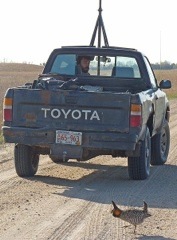
A booming male prairie-chicken checks out one of the tracking vehicles driven by research assistant Perre Kerch
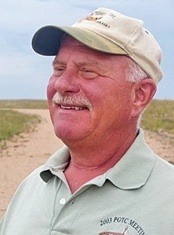
Bill Vodehnal has been a wildlife biologist for Nebraska Game and Parks Commission (NGPC) since 1982 focusing on prairie grouse management, research and habitat development on private and public lands. He also serves as the liaison between NGPC and US Forest Service, farm bill implementation, and outreach. Bill is best known for coordinating “A Grassland Conservation Plan for Prairie Grouse” which addresses the threats and conservation strategies to conserve grassland habitat for lesser and greater prairie-chickens and sharp-tailed grouse in the Great Plains. Bill has been an invaluable asset and supporter of STCP’s current research project in the Nebraska Sandhills.
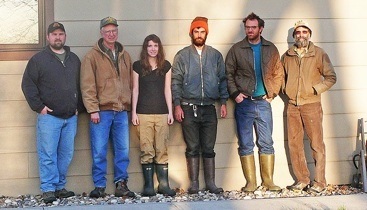
The Nebraska trapping crew – L to R
Tim Baker – Undergraduate student at University of MN, Crookston
Terry Wolfe – Retired MN DNR Wildlife Biologist, Crookston, MN
Krista Kenyon – Canadian Undergraduate student, at University of MN
Perre Kerch – Artist, Ripon, WI
Matt Rethaber – Photographer, Milwaukee, WI
Gary Huschle – Retired USFWS Wildlife Biologist, Leonard, MN
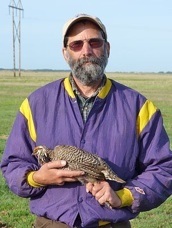
Wildlife biologist Gary Huschle with a male prairie- chicken after removal from a walk-in trap. Gary has assisted with STCP research efforts for over a decade.
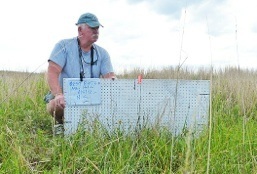
Dr. Joe Flanagan, DVM, Director of Veterinary Services, Houston Zoo assists with a “white board” used to measure and document vegetation at a nest site.
Photography by John Toepfer and Greg Septon.
≈ ≈ ≈ ≈ ≈
Additional Information
Attwater’s Prairie-Chicken
The most endangered grouse in North America
Once, there were about a million Attwater’s prairie-chickens (APC) to be found on six-million acres of coastal prairie extending along the Gulf Coast from Corpus Christi, Texas, north to the Bayou Teche area in Louisiana and inland some 75 miles.
Between land use changes including rice production, overgrazing, fire suppression, urbanization and industrialization, much of that prairie, some estimates as high as 98% of it, has disappeared. While 1 – 2% of the original prairie may still exist, much of that is fragmented as small pockets that are useless for this bird. This isolation onto ever smaller pockets of land creates a situation where predators of the prairie-chickens thrive as the usable habitat decreases.
By 1919, the Attwater’s prairie-chicken was extirpated from Louisiana. Estimates in 1937 showed only about 8,700 individuals left in Texas – less than 1% of the population. This signaled the end of hunting for this once popular and common game bird. The bird was listed as endangered in 1967 with an estimated population of 1,070 birds – 0.1% of the historic population. In 1973 the Endangered Species Act provided immediate protection for the seriously declining species. A devastating series of droughts and floods between 1980 and 1994 seriously impacted the birds such that by 1994 less than 160 individuals could be found in the wild. By 2003, fewer than 60 birds remained in two fragments of habitat located in Galveston and Colorado counties.
So few birds are left today that a captive breeding program offers the only hope for saving this species. The first chicks produced through this program hatched at Fossil Rim Wildlife Center near Glen Rose, Texas, in 1992. Now, Texas A&M University, the Houston Zoo, Fossil Rim, the San Antonio Zoo, Sea World of Texas, Caldwell Zoo, and the Abilene Zoo all take part in raising birds destined to return to the wild. A safe harbor agreement between the U.S. Fish and Wildlife Service (USFWS) and the administering organizations has helped private landowners be a part of the conservation effort to save the APC. Through the agreement, landowners are able to be involved in restoring and maintaining coastal prairie habitat with cost share and incentives, on their own land.
Since 1995, 2,185 APCs have been released from captivity back into the wild. For the first time, in late 2007, 55 juvenile APCs arrived from captive breeding facilities and were released into the wild onto private ranch land in Goliad County in South Texas. This was followed by releases of over 130 birds in 2008, 241 in 2009 and 133 in 2010.
The ranch lies within a pristine native prairie kept intact by family since the mid-1800s and is part of the 60,000-acre Refugio-Goliad Prairie, which spans half a dozen family ranches. The Refugio-Goliad Prairie is the largest remaining intact expanse of tall-grass coastal prairie on the Gulf Coast and is historical habitat for APCs which were last seen in the region in the mid-1990s.
This project is a partnership between The Society of Tympanuchus Cupido Pinnatus, Ltd. (STCP), the Grazing Lands Conservation Initiative (GLCI), The Nature Conservancy (TNC), Texas Parks & Wildlife (TPW), U.S. Fish and Wildlife Service (USFWS), the Coastal Prairie Coalition of the Grazing Lands Conservation Initiative, Papalote Land and Cattle Company (the landowner), the Natural Resources Conservation Service (NRCS) and the APC captive-rearing facilities.
STCP’s role in this recovery effort is to evaluate the releases of the pen-reared APCs and monitor their movements, dispersal and survival. This involves daily monitoring and radio-tracking throughout the year.
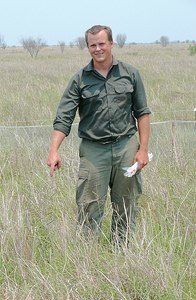
STCP Research Fellow Aaron Pratt points out an Attwater’s prairie- chicken nest in the midst of a protective wire enclosure.
The Attwater’s Prairie-Chicken Recovery Plan was written to prevent this species from extinction, and ultimately, to remove it from the endangered species list. The long-term goal is to establish a self-sustaining wild population of 5,000 birds in three geographically separate, viable populations within it’s historical range.
An updated and revised plan has recently been prepared by the APC Recovery Team that will focus on increasing the number of captive-produced young available for release into the wild (on public and private lands) as well as genetics, the ability of hens to raise broods in the wild, habitat management, diseases and nutrition. To accomplish these goals, further partnerships will be needed between federal and state wildlife agencies, private landowners, grazing organizations and conservation organizations.
To this end, in 2009 STCP submitted a grant proposal to the National Fish & Wildlife Foundation (NFWF) for financial assistance with our work in Texas. The proposal detailed an effort to look into the role that red imported fire ants (RIFA) may be having on chick mortality and native insect availability and it’s relationship to brood survival. In late 2009 STCP was awarded funding for this project and in the fall of 2010 spraying for fire ant control was initiated on six pastures totaling nearly 3,000 acres at four study areas. Evaluations of these efforts and insect monitoring began in the spring of 2011 and a final report was prepared in 2013.
NOTE: Portions of the above are excerpted in whole and in part from Texas Parks & Wildlife and U.S. Fish & Wildlife Service Attwater’s Prairie-Chicken brochures and web sites. Photo credit APC image: Gary Halvorson, USFWS
Attwater’s Prairie-Chicken Publications and Research Reports:
Attwater’s Prairie-Chicken Recovery Plan
Grouse Partnership News Article
Record Attwater’s Prairie-Chicken Release for 2014
Friends of Attwater Prairie Chicken Refuge For additional info and updates click here.

A controlled burn to maintain healthy grasslands at the Attwater Prairie Chicken National Wildlife Refuge in Texas.
Note: This page provides archived content from the original STCP website as shown in 2016.

